Mixed martial arts (MMA) has really exploded in popularity over the past three decades. This has been largely thanks to the popularity of the Ultimate Fighting Championship (UFC) and the hard work done to make cage fighting mainstream. The close relationship between the two is often why we here people ask us “is ufc mma?”. UFC is the promotional organisation, MMA is the sport that developed out of the necessity to become the best fighter. The UFC we know today is very different to the animal it once was. Let’s take a look at the humble beginnings of one of the greatest fighting promotions that has ever existed. One that woke the world up to the power of Brazilian Jiu Jitsu (BJJ) and the birth of MMA as a legitimate sport.
-
UFC 1
How it began
Humble beginnings
It was back in November 1993 that the UFC ran their first event in front of a half-filled sports arena in Denver, Colorado. While many top fighters in different disciplines were contacted at the time to take part in the event, few accepted. They can be forgiven for this, at the time there had never been an event quite like it, where martial artists from different disciplines were pitted against each other to see who was top dog.
Who needs rounds?
Unlike today’s 3 5-minute rounds, UFC 1 had unlimited 5-minute rounds. Yes, you read that right. UNLIMITED. That meant, if there wasn’t a KO, submission, referee stoppage or a towel thrown in, they kept going indefinitely (with a 1 min break in between). Thankfully for the viewers and the participants this wasn’t necessary as most fights ended within the first 5 minutes!Why do we need rules?
Although there are still a fair amount of people that find today’s UFC too violent to watch, it really has changed quite significantly since its inception. Here are some examples of what was allowed at UFC 1: eye-gouging, blows to the groin and no gloves required. Thankfully we’ve come a long way since then, while combat sports are entertaining, some of the injuries sustained by the participants can be life-changing.Your discipline is the best? Prove it.
UFC provided the ideal battleground to show the world how effective your martial art was. There were no katas, just pure combat. Some of the disciplines included: Boxing, Brazilian Jiu Jitsu, Kickboxing, Sumo wrestling, Shootfighting and Karate.Weight classes? Na.
Know how to deal with the problem of having opponents at varying weight classes that you want competing against each other? Get rid of weight classes. That’s right, UFC 1 was a catch weight tournament to decide who was the ultimate fighter, regardless of their size, this remained the case until UFC 12 when weight classes were first introduced.
Who won?
Royce Gracie was the winner of the first ever UFC tournament, UFC 1. He was able to use his defensive and offensive Brazilian Jiu Jitsu skills to ensure victories over 3 opponents on a single night.The First UFC Fight Ever!
-
UFC 2
Back for more
Tournament size as originally intended
Although UFC 1 was also scheduled to be a 16-man tournament, due to lack of interest, the promoters settled for an 8-man tournament. However, due to the popularity of UFC 1, they were able to muster up enough interested to get a full 16-man tournament scheduled at UFC 2. This allowed for a greater range of disciplines to be showcased at the event, giving a truer representation of which was the best martial art in the world.More eyes than ever
The word was starting to spread about the UFC and especially Royce Gracie’s abilities in BJJ. Buy rate of the PPV more than doubled from 86,000 (at UFC 1) to 300,000! Some tuned in to learn, others to see if it was just a fluke, interest was starting to grow and the pressure was on Royce’s shoulders to replicate what he had in UFC 1.Pressure? What pressure?
Royce passed the test with flying colours. Winning this time even more impressively, submitting 4 opponents in a row. This proved to the world once again that Brazilian Jiu Jitsu was the real deal, a discipline to be taken notice of, the new kid on the block.Big John enters
There is no MMA referee more iconic than the man himself, Big John McCarthy. He became part of the furniture at UFC after his first appearance at UFC 2, watching the sport of MMA grow before his very eyes. Until this day he is still one of the most respected MMA referees, even though he retired from his role as referee to become a commentator (for a rival organisation– Bellator).
McCarthy was not only important on fight night, he helped promote the sport outside of the cage too. If that wasn’t enough, he also played a pivotal role in the rules that were developed to ensure the mainstream success that the UFC has enjoyed.
While doing all of the above he even found the time to train BJJ and attained the level of black belt in 2007.
Weit vs Lucarelli
-
UFC 3
He is mortal
Gracie throws in the towel
Many in attendance thought it would be a white wash for Gracie again, but it wasn’t to be this time around. He came up against the formidable kickboxer Kimo Leopoldo. Kimo gave him his most serious challenge yet under the banner of UFC. Although he went on to defeat Leopoldo, he took a considerable amount of damage for the sub he finally got. This led to him forfeiting the tournament due to fatigue.Who needs rest?
The organisers of UFC 3 did away with rounds for the tournament. It was a simple setup. You fight till you win or lose. Interestingly, even though this was the case, no bout lasted longer than 5 minutes.Emergence of new winning discipline
With Royce Gracie out of the competition, all eyes were on the remaining competitors. Ken Shamrock was one of them. However, it wouldn’t be him taking home the $60,000 prize (due to injuries sustained in his victory during the semi-finals). It was his replacement, a Ninjutsu practitioner, Steve Jennum, that went on to win via submission to strikes.Royce vs Kimo
-
Notable Figures
Legends
-
Royce Gracie
The man, the legend, Royce (pron. Hoyce) Gracie, was the winner of UFC 1. Although not the biggest fighter in the tournament, his black belt in Brazilian Jiu Jitsu proved too overwhelming. This allowed him to earn 3 submissions in a row (including a golden gloves boxing champion in Art Jimmerson). UFC 1 was definitely the coming out party for BJJ. It ensured that fans in attendance and viewers around the world woke up to the power of the art form!
Winning this tournament made Royce an instant legend. The following tournament battles cemented his legacy and the honour of the Gracie family.
-
Ken Shamrock
Ken Shamrock, considered to be one of the greatest MMA fighters of all time, was a regular in the early UFC tournaments. He was touted as the biggest threat to Royce’s dominance and although falling short on occasions, he was a fan favourite with a whole lot of skill and menace to match. His background was in a discipline called shootfighting (a mixture of kenpo and wrestling).
Ken and his brother Frank enjoyed success in the UFC, both winning championship titles.
-
-
Conclusion
The creators of UFC took a risk starting up a new combat sport event but it paid off in the end. MMA has flourished and this is almost entirely thanks to the UFC. As well as MMA, BJJ has also exploded in popularity and continues to increase at an exceptional rate. We really are living in the golden age of MMA and BJJ, long may it continue.
Interested in taking part in classes at TFC? Come visit us and see if we’re the right fit for you.
Find out more about our BJJ sessions here.
Love watching UFC fights? Enjoy the entire collection of fights by joining UFC Fight Pass here.

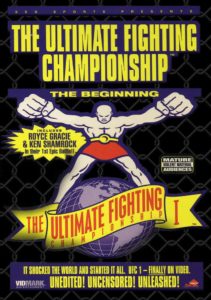
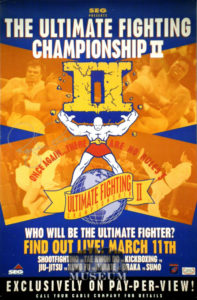
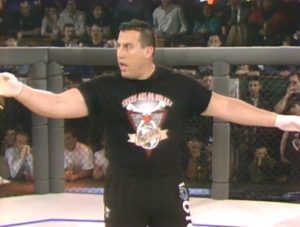
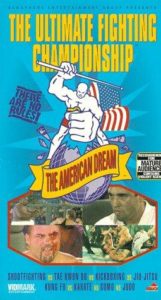
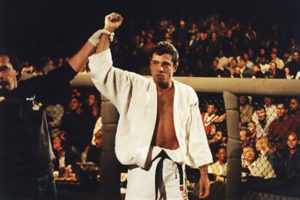
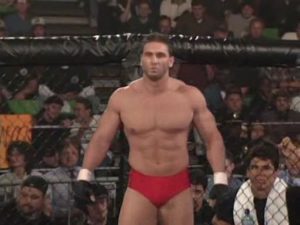
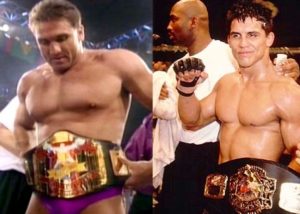
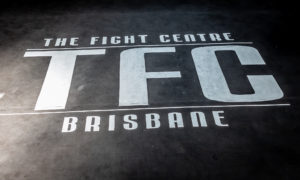 The creators of UFC took a risk starting up a new combat sport event but it paid off in the end. MMA has flourished and this is almost entirely thanks to the UFC. As well as MMA, BJJ has also exploded in popularity and continues to increase at an exceptional rate. We really are living in the golden age of MMA and BJJ, long may it continue.
The creators of UFC took a risk starting up a new combat sport event but it paid off in the end. MMA has flourished and this is almost entirely thanks to the UFC. As well as MMA, BJJ has also exploded in popularity and continues to increase at an exceptional rate. We really are living in the golden age of MMA and BJJ, long may it continue.